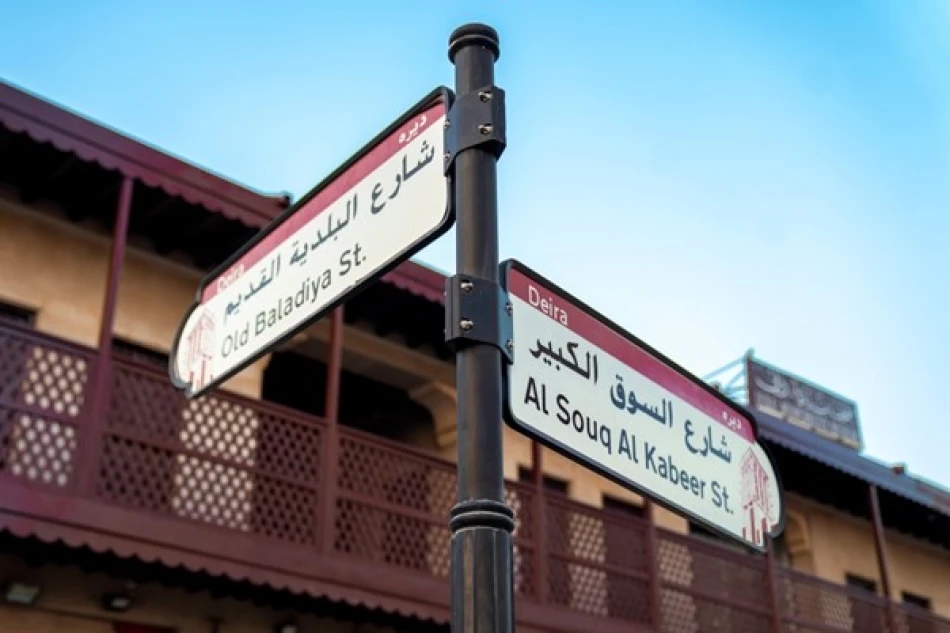
Dubai Municipality Enhances Three Historic Tourism Trails in Deira Markets
Dubai Transforms Historic Deira Souks with $2.6 Million Heritage Makeover
Dubai Municipality has completed a comprehensive heritage tourism project in the iconic Deira souks, developing three heritage walking routes spanning 1,784 meters at a cost of 9.5 million dirhams ($2.6 million). The initiative aims to preserve the historical character of traditional markets while enhancing visitor experiences and supporting over 500 local businesses, positioning Dubai as a leading cultural tourism destination that successfully bridges its trading past with its modern ambitions.
Strategic Investment in Cultural Tourism
The project represents more than just infrastructure improvement—it's a calculated move to diversify Dubai's tourism portfolio beyond luxury shopping and futuristic attractions. By investing in heritage preservation, Dubai is tapping into the growing global trend of experiential and cultural tourism, where travelers seek authentic local experiences rather than standardized attractions.
The three completed routes include the Gold Souk pathway (995 meters), the Al Ahmadiya School heritage axis (430 meters), and the Spice Souk corridor (359 meters), covering a total area of 25,800 square meters. This strategic layout connects seven traditional markets: medicines, spices, utensils, perfumes, textiles, incense, and scenic areas, alongside the famous Gold Souk and Ahmadiya district.
Economic Impact and Business Support
The renovation directly benefits approximately 500 shops across the traditional markets, providing them with improved infrastructure and increased foot traffic from enhanced tourist routes. This approach mirrors successful heritage tourism strategies in cities like Istanbul's Grand Bazaar district or Marrakech's medina, where government investment in traditional markets has significantly boosted local merchant revenues.
The project includes practical improvements designed to increase dwell time and spending: 210 square meters of fabric canopies for shade, enhanced lighting for shop facades, 38 directional signs, 154 floor guidance markings, and three public squares with seating for over ten people each. These amenities address the practical challenges of exploring traditional markets in Dubai's climate while maintaining authentic aesthetics.
Preserving Authenticity While Modernizing
Dubai Municipality emphasized the use of traditional local materials, particularly sarooj (traditional lime plaster) in building restoration, ensuring the preservation of authentic character. This attention to historical accuracy sets the project apart from typical urban renewal efforts that often prioritize modern materials over cultural authenticity.
The restoration of wooden canopies and maintenance of open areas provides weather protection while enhancing the markets' visual appeal—a crucial factor for attracting international visitors accustomed to climate-controlled shopping environments.
Alignment with Dubai's Urban Vision
This heritage project integrates with Dubai's broader "Dubai Urban Plan 2040," which emphasizes sustainable and comprehensive urban development. The initiative reflects the emirate's commitment to maintaining cultural identity while pursuing rapid modernization—a balance that few global cities have achieved successfully.
Bader Anwahi, Executive Director of Public Facilities at Dubai Municipality, emphasized that the project positions Dubai on the cultural tourism map while supporting the emirate's status as a global destination for tourism, culture, trade, and economy.
Global Context and Future Implications
Dubai's investment in heritage tourism comes at a time when cities worldwide are recognizing the economic value of cultural preservation. Similar to Singapore's Chinatown revitalization or Abu Dhabi's Cultural District development, Dubai is creating differentiated tourism products that extend visitor stays and increase per-capita spending.
The project's success could serve as a model for other Gulf cities seeking to diversify their tourism offerings beyond oil-dependent economies. By creating integrated experiences that combine shopping, culture, and history, Dubai is building sustainable tourism infrastructure that appeals to diverse international markets while supporting local businesses and preserving cultural heritage for future generations.
Most Viewed News

 Layla Al Mansoori
Layla Al Mansoori






